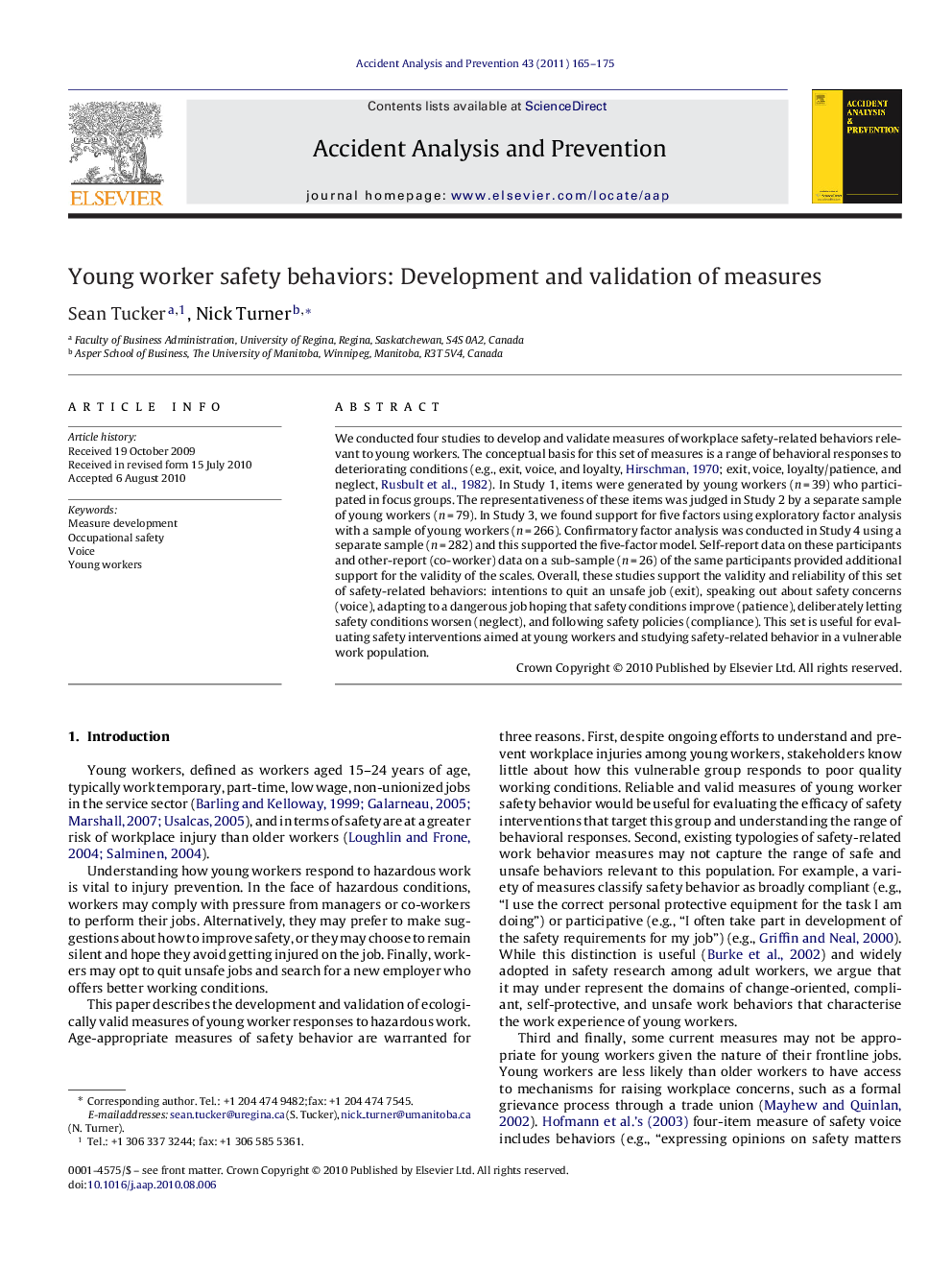| Article ID | Journal | Published Year | Pages | File Type |
|---|---|---|---|---|
| 572745 | Accident Analysis & Prevention | 2011 | 11 Pages |
We conducted four studies to develop and validate measures of workplace safety-related behaviors relevant to young workers. The conceptual basis for this set of measures is a range of behavioral responses to deteriorating conditions (e.g., exit, voice, and loyalty, Hirschman, 1970; exit, voice, loyalty/patience, and neglect, Rusbult et al., 1982). In Study 1, items were generated by young workers (n = 39) who participated in focus groups. The representativeness of these items was judged in Study 2 by a separate sample of young workers (n = 79). In Study 3, we found support for five factors using exploratory factor analysis with a sample of young workers (n = 266). Confirmatory factor analysis was conducted in Study 4 using a separate sample (n = 282) and this supported the five-factor model. Self-report data on these participants and other-report (co-worker) data on a sub-sample (n = 26) of the same participants provided additional support for the validity of the scales. Overall, these studies support the validity and reliability of this set of safety-related behaviors: intentions to quit an unsafe job (exit), speaking out about safety concerns (voice), adapting to a dangerous job hoping that safety conditions improve (patience), deliberately letting safety conditions worsen (neglect), and following safety policies (compliance). This set is useful for evaluating safety interventions aimed at young workers and studying safety-related behavior in a vulnerable work population.
Research highlights▶ We developed and validated measures for young worker safety-related behaviors. ▶ These measures can be used to evaluate the efficacy of young worker safety interventions. ▶ These measures can be used to evaluate the efficacy of young worker safety interventions.
